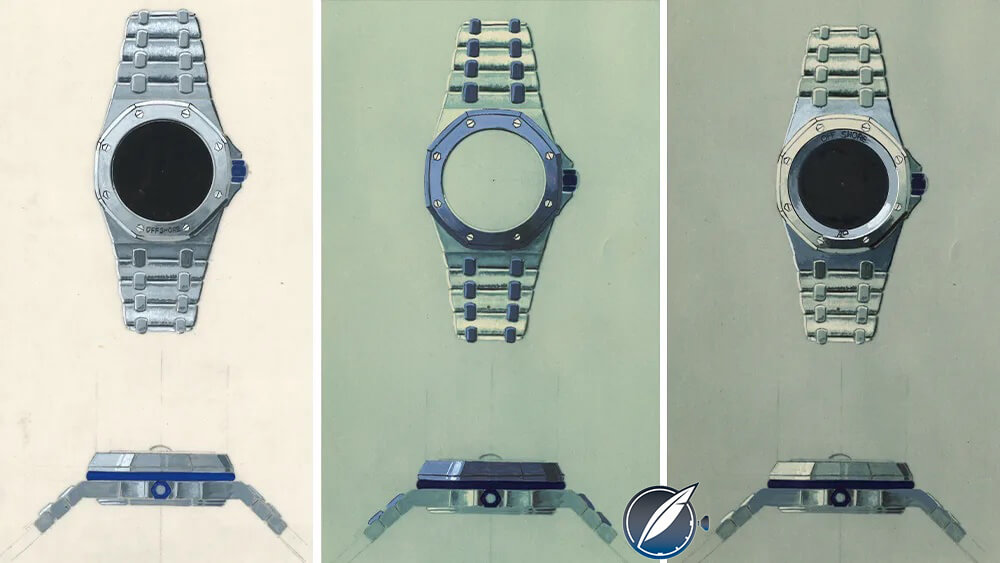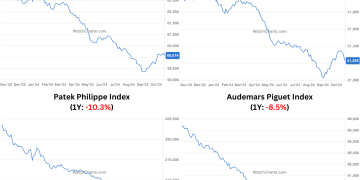Credits: Article and images by Alexey Kutkovoy @ Quill & Pad. See the original article here - https://quillandpad.com/2023/07/14/audemars-piguet-royal-oak-offshore-30th-anniversary-4-new-2023-releases/
I consider the introduction of the Audemars Piguet Royal Oak in 1972 to be one of the most important turning points in the evolution of wristwatches in the 20th century. Until then, there were mainly what we might now refer to as vintage watches (traditional in style). They were pretty but (dare I say) boring. We collected them (and many still do), but by and large, they are now out of date.
That’s why we call them vintage watches. They didn’t disappear in 1972 but flooded the market in the 1970s and 1980s. Just as pocket watches continued to be offered on the market for decades after wristwatches became very popular in the mid-1910s,
Two things are important to consider. Firstly, it’s a groundbreaking event in luxury watchmaking to create a stainless steel sports watch as valuable (and now often more valuable) than a solid gold dress watch. And secondly, the original Royal Oak is still perceived as a contemporary watch today. I think we’d all love to wear a historic Royal Oak Ref. 5402, and not just because of the enormous prices achieved by the Royal Oak at auctions and on the secondary market recently.


2023 Audemars Piguet Royal Oak Offshore Ends of Days with yellow highlights
Why all this fuss about the Royal Oak the title is about the anniversary editions of the Royal Oak Offshore (ROO), a watch from a different era? The point I’m trying to make is that the introduction of the Royal Oak Offshore was as much of a turning point in the history of modern wristwatches as the original Royal Oak was.
First, the ROO was again a game changer for the entire industry. Truly significant progress doesn’t usually lead to noticeable change in a day or even in a year. The Royal Oak Offshore proved to be a harbinger of a shift in public interest towards watches with distinctive, eye-catching designs, characterized by increased robustness and durability. In short, it’s a spectacular sports watch.
Secondly, the Royal Oak Offshore was very large for the time. While 42 mm is considered normal today, in 1993 the standard for classic men’s watches was 34 to 36 mm, and for men’s sports watches it was mostly 36 to 38 mm.
Back in 1997 when the Patek Philippe Aquanaut Ref 5060A, the sporty version of a Nautilus, was launched, it had a 35.6mm case. That was followed in 1998 by the Ref 5065 with a 38.8mm case, and the Aquanaut Ref. 5167 with a 40.8mm case didn’t appear until 2007!
Also launched at the same time as the ROO in 1993 was IWC Schaffhausen’s collection, which celebrated the brand’s 125th anniversary. It featured Ref. 5441, a classic 42mm men’s watch that we’d now call a vintage reedition, and a flagship model, the ultra-complicated 42.2mm Il Destriero Scafusia.
Two years earlier, Jean-Claude Biver unveiled the Blancpain 1735 Grande Complication, the world’s first Grande Complication wristwatch (which is even more complicated than tradition dictates due to the tourbillon and automatic winding) that was also 42 mm. Those two models and the ROO seem to be all of the 42mm case watches from well-known brands available in 1993.
And not to forget the 40mm Rolex Sea-Dweller Ref. 16600, which according to legend, was put on the table by Emmanuel Gueit, the designer of the Offshore, as a final argument to convince the Audemars Piguet management that the 42mm watch would definitely find a market.
Looking at a 40mm+ watches from this era, it’s clear that the testosterone-charged, aggressively sporty ROO was like no other. It retained the DNA of its ancestor, the ‘Jumbo’, but the youngster’s character is different. The early Offshore was quickly dubbed ‘The Beast’, although it seems more like “The Beauty” given the many aggressively sporty, techno and retro-futuristic designs we’ve seen since the ROO watch came out.
With all due respect to ‘The Beast’, it didn’t start the oversized watch trend. But it was another foot in the door. A very strong, noticeable step, but attitudes really changed four years later with the revived Panerai, which rose into orbit after, and thanks to, the purchase by the Vendôme Group (now Richemont Group).
The 44mm Luminor solidified the trend for large watches whereas the Offshore only helped open the door. And Panerai established the trend of militaristic vintage watches that still dominates the industry to this day.
Thirdly, the Offshore, like the original Royal Oak, was a risky, forward-looking development. This isn’t to say that the momentum of the original Royal Oak had dried up by 1993. There was no big problem with the Royal Oak collection. A year earlier, to celebrate the 20th anniversary of the Royal Oak, a special ‘Jumbo’ edition limited to 1,000 pieces had been released – a very large run for Audemars Piguet in those years.
In addition, the Royal Oak perpetual calendars introduced in 1984 proved to be very commercially successful. So how did the idea for a new, sportier Royal Oak come about?
There must have been something in the air. Perhaps the team at AP wanted something new. Now we know that there were negotiations with a dealer from Germany who wanted a watch focusing on yacht racing with all the necessary technical features. That’s probably where the name comes from, because the most advanced yacht races usually take participants offshore, i.e., away from land.
The alternative is clear: instead of Royal Oak, a watch for city dwellers, the Royal Oak Offshore is a watch for a much more active lifestyle. The premiere of the Offshore was prepared several years before its launch. As early as 1989, the Audemars Piguet, which in those years was headed by Stephen Urquhart, applied for the rights to the brand name “Offshore”.


Emmanuel Gueit’s sketches for the original Audemars Piguet Royal Oak Offshore
In the same year, the first design sketches appeared by designer Emmanuel Gueit, who was later called the father of the Royal Oak Offshore.


Emmanuel Gueit, ‘father’ of the Audemars Piguet Royal Oak Offshore (photo courtesy SIHH)
The Offshore project, by the way, was much happier than the previous attempt to diversify the design of the Royal Oak: The earlier attempt, a rectangular version with a quartz movement, is now remembered mostly by experts and enthusiasts. Jacqueline Dimier, head of design at Audemars Piguet, said that is wasn’t really a Royal Oak, but a relative. Presumably, like the Offshore.
—————————————————————————————————–
Credits: Article and images by Alexey Kutkovoy @ Quill & Pad. See the original article here - https://quillandpad.com/2023/07/14/audemars-piguet-royal-oak-offshore-30th-anniversary-4-new-2023-releases/











